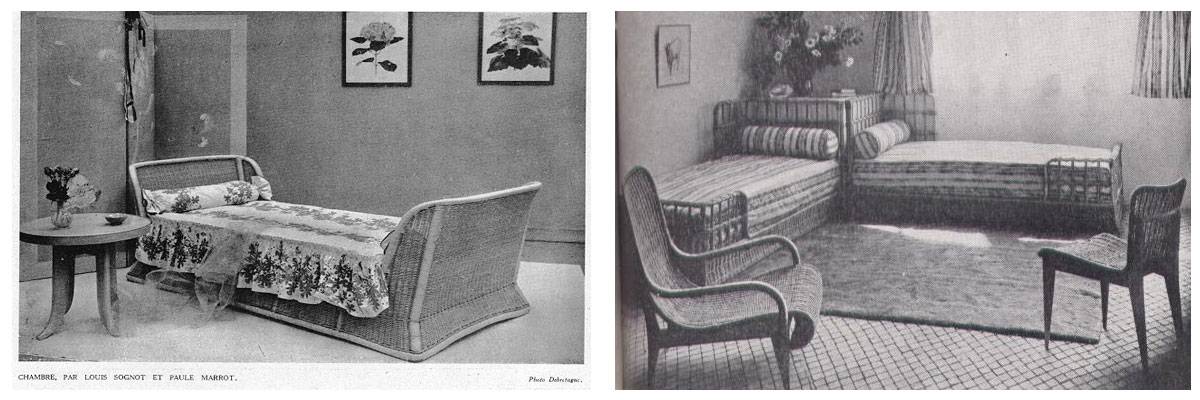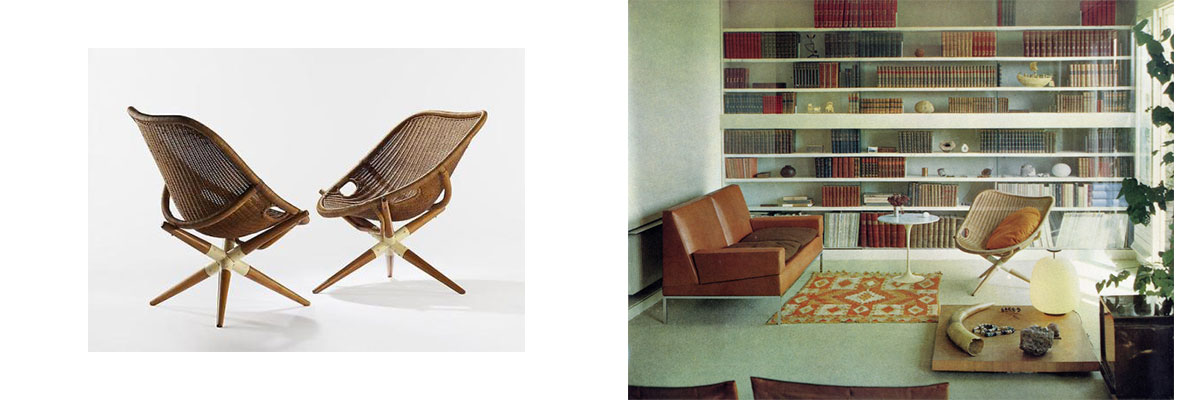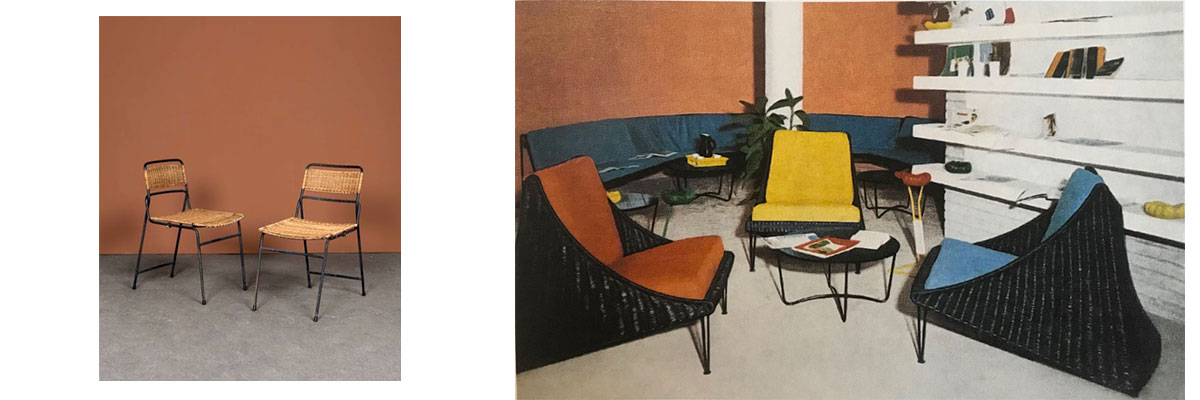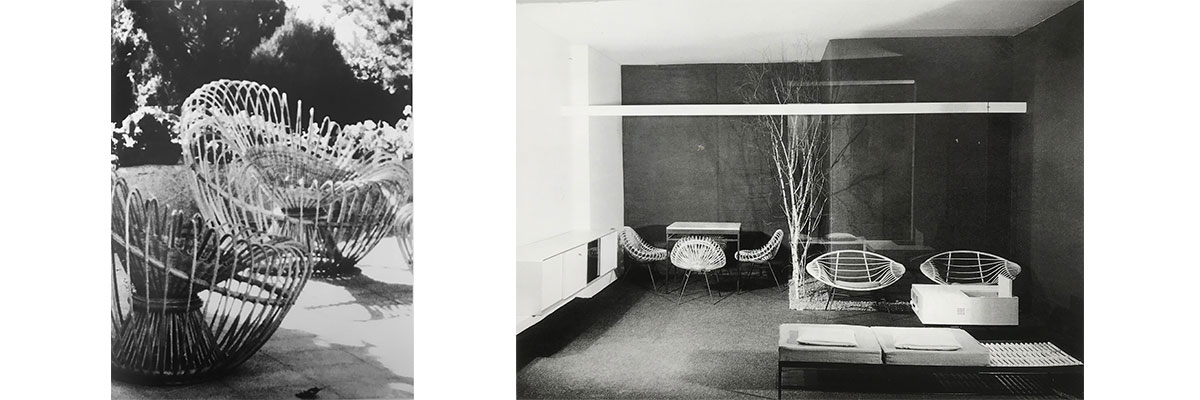Rattan, a noble material shaped by many designers
Exotic, inspiring, authentic ... rattan has gone through the history of furniture, reinvented by talented designers who have managed to seduce the hippie movement, in search of a return to nature, after being the prerogative of the most beautiful secondary houses on the Emerald Coast.
Origins of this material of quality
Real rattan, sometimes confused with bamboo or wicker in common parlance, comes from a plant in the botanical family of liana palms called "Rotang". Found mainly in the tropical forests of South East Asia, rattan is also cultivated in South America as well as in Africa.
Rostang, which gave its name to rattan, is distinguished by its solid, yellow and pale stems, with ideal properties for creating furniture.
Flexible, unlike bamboo, it can easily be bent, offering endless possibilities to creative minds. Lasting and solid, it resists to both the sun and the rain, making this material an ally of choice for indoor and outdoor furniture.

Rattan through the centuries
It is in the Asian tribes that we find the first traces of rattan work, before colonization exports it to Western countries where it quickly found its place in our interiors.
With their taste for Asia, the nobility of the Second Empire took hold of the trend by inviting rattan in their living rooms and winter gardens; a fashion that has crossed the centuries to furnish the terraces of Parisian cafes with their famous rattan chairs from the 1920s.
The shortage of raw materials from the Second World War gave a new lease of life to this affordable material which will allow the post-war industry to flourish thanks to the know-how kept in French factories. So acclaimed by the designers, it will gradually invade the interiors, and especially that of second homes. From Dinard to Saint-Tropez, fashion is on rattan, from the dining room to the bedroom; we look for exoticism and escape in his holiday home, which we furnish differently from his urban housing.
Famous names that have marked its history
Throughout the 20th century, and especially after the Second World War, great designers gave acclaim to rattan by creating emblematic pieces in the history of design.
Louis Sognot, specializing in metal furniture in its early hours, turned to rattan after the 1930s crisis and the shortage of metal. He would try the marriage of these two materials on a metal chair model, in 1932, before drawing a boat bed set in rattan marrow in 1946, for the daughter of Paule Marrot; a flexible line to which he will return regularly. His first attempt at a chair will also give birth to a seating model for the French Furniture Commission, adapted on a wooden frame to compensate for the lack of metal.

Archives, Louis Sognot furniture- Photos @Art-utile
Joseph-André Motte will take advantage, with great talent, of the research of the time, appropriating - like many other creators - the woven rattan cord; a technique close to the craft that brings curves into rattan furniture, allowing designers to get rid of straight lines. Joseph-André Motte will give life to his legendary "Tripode" armchair, with its curvy shell designed in 1949 and edited in 1950 by Rougier, for which he won the silver medal at the Milan Triennial. He drew many other rattan models, which would make an impression with their technique, before imagining the "Girolle" armchair in 1963, a veritable revolution of its time; a piece of woven and folded rattan, modular in seats, tables and shelves thanks to an ingenious system of panels.

Tripode armchair by Joseph André Motte - Photos @Demisch Danant
The decorator, upholsterer, and even furniture and lighting manufacturer Mathieu Matégot made rattan his second favorite material, after the perforated sheet which made him famous. Rattan, financially affordable and suffering from no deficiency, experienced a real craze in the 1950s; he will take the opportunity to work with this material in everyday objects, in association with perforated metal. He will thus create trays, bottle holders, and even decline his Nagasaki chair in a few rare copies.

Mathieu Matégot rattan furniture- Photos @Leclerc & Les Décorateurs des Années 50 Patrick Favardin
Janine Abraham, graduated from her promotion at the Camondo school in 1952, and her husband Dirk Jan Rol, Dutch architect-designer, will receive in 1958 the gold medal at the Universal Exhibition in Brussels for their “Soleil” armchair in rattan. Seduced by this material, they will then design the "Lemon" for the manufacturer Rougier; an armchair as well as a sofa, resting on steel or stainless steel legs, with very innovative organic lines at the end of the 1950s.

Janine Abraham rattan furniture - Photos @Les Décorateurs des Années 50 Patrick Favardin
We will also mention the names of two talented women: Colette Gueden, great designer for the art workshop of the Parisian department stores Primavera to whom we owe their models of rattan chairs, armchairs and tables, as well as Yvonne Barruet which marked the history of rattan furniture with its creations put in the spotlight by the magazine “Décor of today” in 1955.

